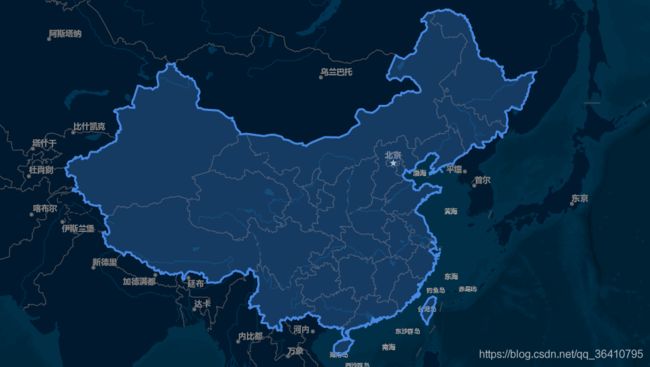openlayers6【五】地图图层数据来源 source 详解
文章目录
- 1. 写在前面
- 2. source 数据源都有哪些类型
- 2. source 用法实例
- 2.1 ol.source.Vector 的使用(矢量图层的数据来源)
- 2.2 ol.source.Image的使用(提供单一的图片地图)
- 3. 写在后面
1. 写在前面
在 openlayers 6【二】vue 初始化map地图详解 中,我们讲了初始化一个地图,必不可少的三要素。target,view,layers。在前面的两片文章中也讲了 view 和 layers 是什么。source 是 Layer 的重要组成部分。当然,layers图层里面也是有一个必不可少的属性,那就是 source 数据源,如果没有数据源你就不能渲染处地图的底图,也就没有任何含义 (这里的必不不是说是必须有,没有这属性也能显示)
2. source 数据源都有哪些类型
- ol.source.BingMaps ,必应地图的切片数据,继承自ol.source.TileImage;
- ol.source.Cluster,聚簇矢量数据,继承自ol.source.Vector;
- ol.source.ImageCanvas,数据来源是一个 canvas 元素,其中的数据是图片,继承自 ol.source.Image;
- ol.source.ImageMapGuide,Mapguide 服务器提供的图片地图数据,继承自 ol.source.Image,触发ol.source.ImageEvent;
- ol.source.ImageStatic,提供单一的静态图片地图,继承自ol.source.Image;
- ol.source.ImageVector,数据来源是一个 canvas 元素,但是其中的数据是矢量来源
- ol.source.Vector,继承自 ol.source.ImageCanvas;
- ol.source.ImageWMS,WMS 服务提供的单一的图片数据,继承自 ol.source.Image,触发
ol.source.ImageEvent; - ol.source.MapQuest,MapQuest 提供的切片数据,继承自 ol.source.XYZ;
- ol.source.OSM,OpenStreetMap 提供的切片数据,继承自 ol.source.XYZ;
- ol.source.Stamen,Stamen 提供的地图切片数据,继承自 ol.source.XYZ;
- ol.source.TileVector,被切分为网格的矢量数据,继承自 ol.source.Vector;
- ol.source.TileDebug,并不从服务器获取数据,而是为切片渲染一个网格,继承自 ol.source.Tile;
- ol.source.TileImage,提供切分成切片的图片数据,继承自 ol.source.Tile,触发
ol.source.TileEvent; - ol.source.TileUTFGrid,TileJSON 格式 的 UTFGrid 交互数据,继承自 ol.source.Tile;
- ol.source.TileJSON,TileJSON 格式的切片数据,继承自 ol.source.TileImage;
- ol.source.TileArcGISRest,ArcGIS Rest 服务提供的切片数据,继承自 ol.source.TileImage;
- ol.source.WMTS,WMTS 服务提供的切片数据。继承自 ol.source.TileImage;
- ol.source.XYZ,XYZ 格式的切片数据,继承自 ol.source.TileImage;
- ol.source.Zoomify,Zoomify 格式的切片数据,继承自 ol.source.TileImage。
- ol.source.Image,提供单一图片数据的类型,直接继承自 ol.source.Source;
- ol.source.Tile,提供被切分为网格切片的图片数据,继承自 ol.source.Source;
- ol.source.Vector,提供矢量图层数据,继承自 ol.source.Source;
2. source 用法实例
可以看到,source 存在很多种,我们也不可能都去讲一遍,下面挑几个大家常用的 来写
2.1 ol.source.Vector 的使用(矢量图层的数据来源)
2.1.1 基本事件(重要)
addfeature,当一个要素添加到 source 中触发;
removefeature,当要素移除时候发生;
changefeature,当要素变化时触发;
clear,当 source 的 clear 方法调用时候触发;
2.1.2 接受的参数(重要)
/**
* @typedef {{attributions: (Array.<ol.Attribution>|undefined),
* features: (Array.<ol.Feature>|undefined),
* format: (ol.format.Feature|undefined),
* loader: (ol.FeatureLoader|undefined),
* logo: (string|olx.LogoOptions|undefined),
* strategy: (ol.LoadingStrategy|undefined),
* url: (string|undefined),
* wrapX: (boolean|undefined)}}
* @api
*/
- attribution,地图右下角的 logo 包含的内容;
- features,地理要素,从字符串读取的数据;
- format,url属性设置后,加载要素使用的数据格式,采用异步的 AJAX 加载;
- loader,加载要素使用的加载函数;
- logo,logo包含的内容;
- strategy,加载要素使用的策略,默认是 一次性加载所有要素;
- url,要素数据的地址;
- wrapX,是否在地图水平坐标轴上重复,默认是 true。
2.1.3 实例
2.1.3.1 features 方法实现
这里是一个中国地图的geoJson数据。格式也是GeoJSON字符串格式。那么我们可以用来初始化一个图层。(这里只是贴了核心的部分代码,完整的请看后面博客会写)
import areaGeo from "@/geoJson/china.json";
var vectorSource = new ol.source.Vector({
features: (new ol.format.GeoJSON()).readFeatures(areaGeo )
});
var vectorLayer = new ol.layer.Vector({
source: vectorSource,
style: style
});
map.addLayer(vectorLayer);
var vectorLayer = new ol.layer.Vector({
source: new ol.source.Vector({
url: '../geoJson/china.json',
format: new ol.format.GeoJSON()
})
});
这两种方法中都会指定数据来源格式, 矢量数据源支持的格式包含很多:gml、EsriJSON、geojson、gpx、igc、kml、osmxml、ows、polyline、topojson、wfs、wkt、wms capabilities(兼容 wms 的格式)、 wms getfeatureinfo、 wmts capabilities、xlink、xsd等格式。这些格式都有readFeatures、readFeature和readGeometry方法用于读取数据。
2.2 ol.source.Image的使用(提供单一的图片地图)
2.2.1 基本事件
imageloadstart,图片地图开始加载触发的事件;
imageloadend,图片地图加载完毕触发的事件;
imageloaderror,图片地图加载出错时触发的事件。
2.2.2 接受的参数
/**
* @typedef {{attributions: (Array.|undefined),
* extent: (null|ol.Extent|undefined),
* logo: (string|olx.LogoOptions|undefined),
* projection: ol.proj.ProjectionLike,
* resolutions: (Array.|undefined),
* state: (ol.source.State|undefined)}}
*/
resolutions,地图分辨率。其他的选项都与以上的一样。
3. 写在后面
上面只是简单的讲了两个案例,还要更多的没有说到,后面会补充一些。根据后面实际业务需求去写,大家更能理解
source 是 layer 中必须的选项,定义着地图数据的来源,与数据有关的函数,如addfeature、getfeature等函数都定义在 source 中,而且数据源支持多种格式。
